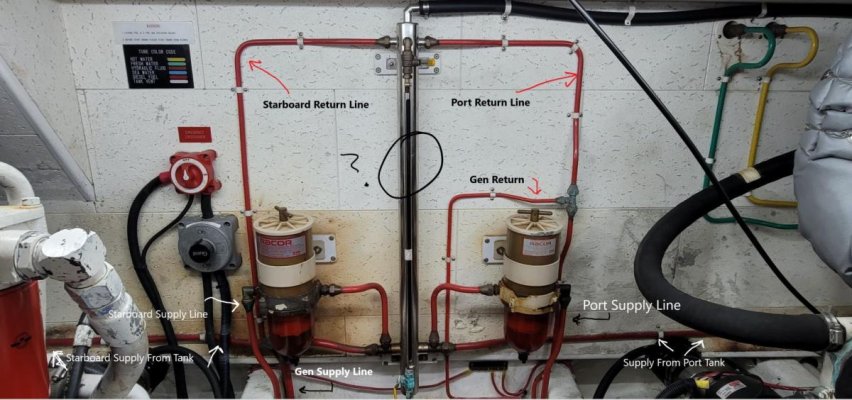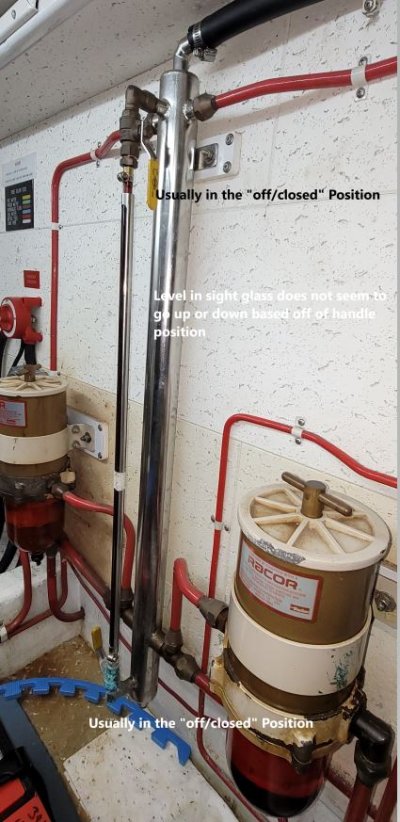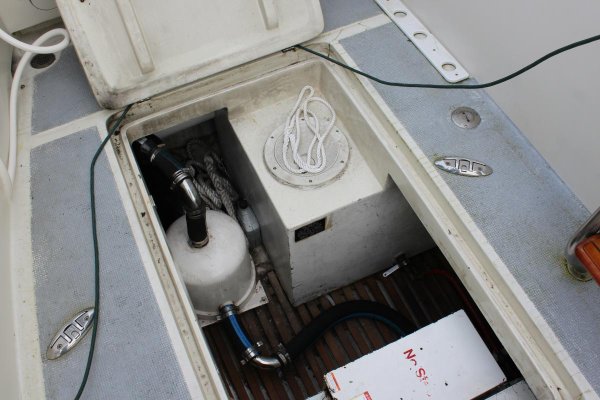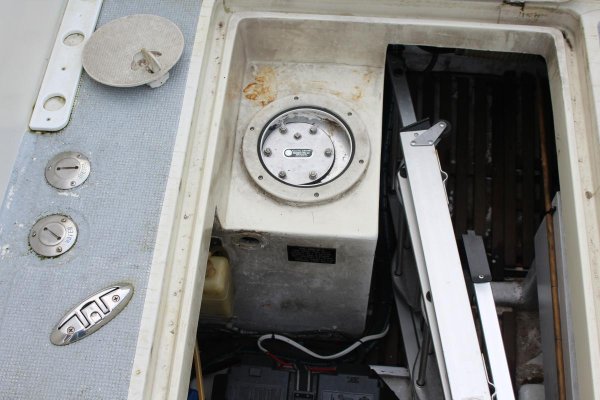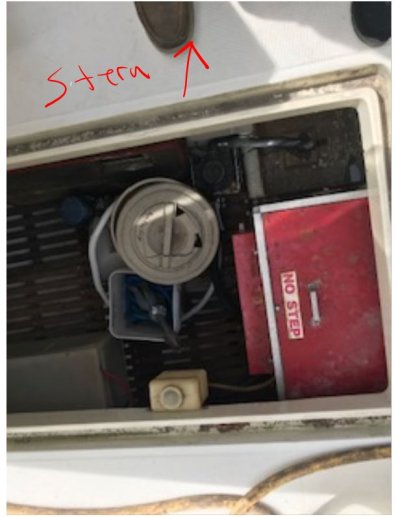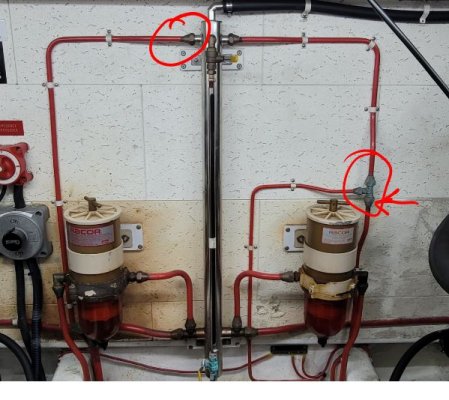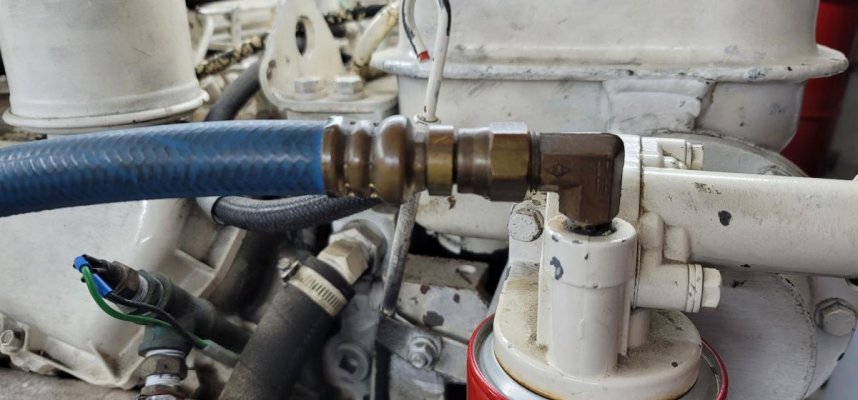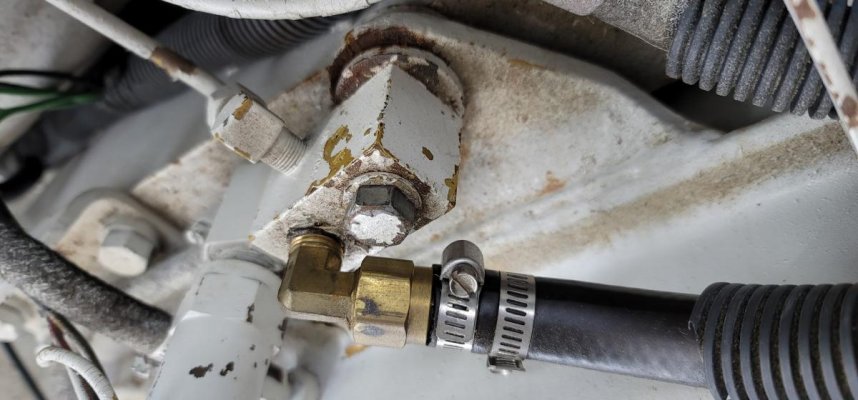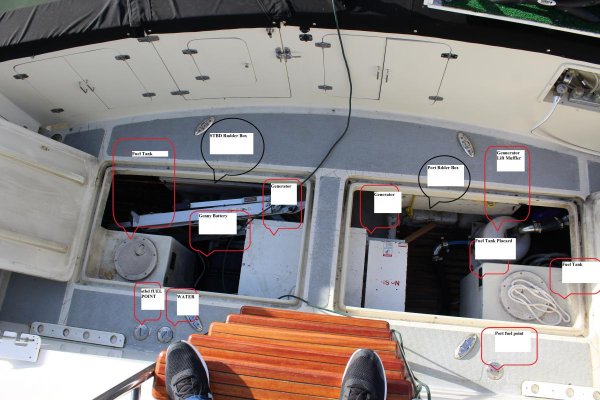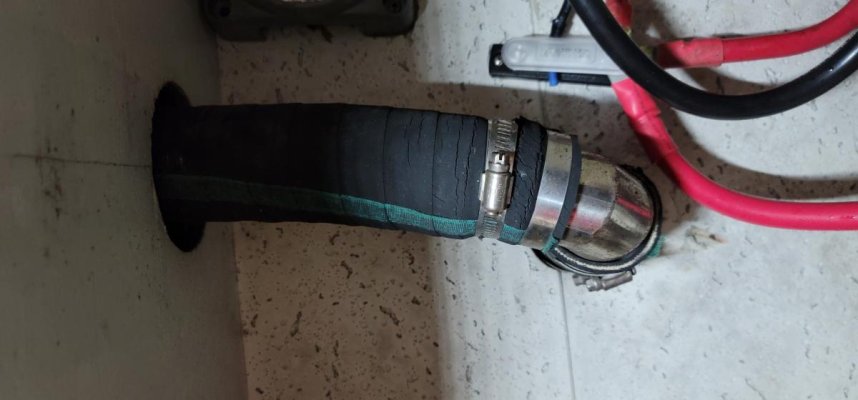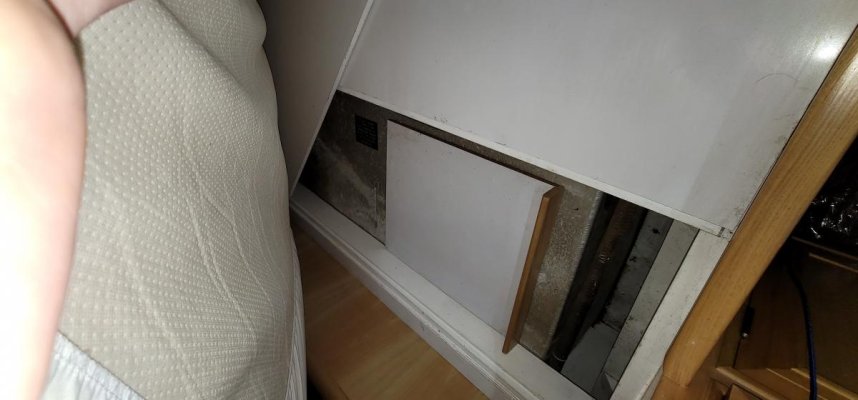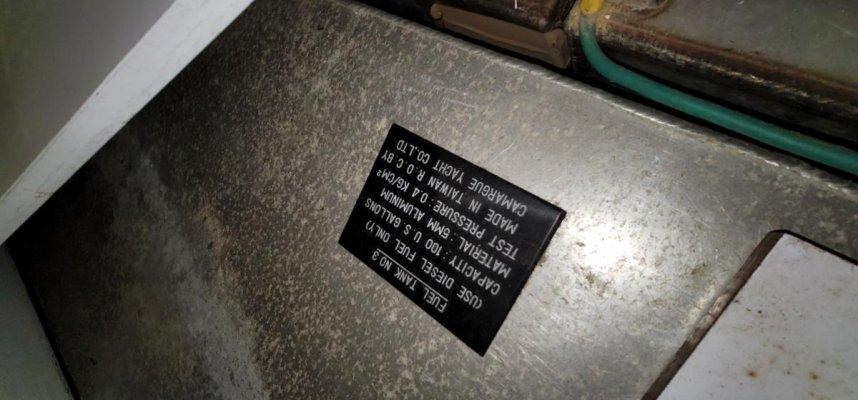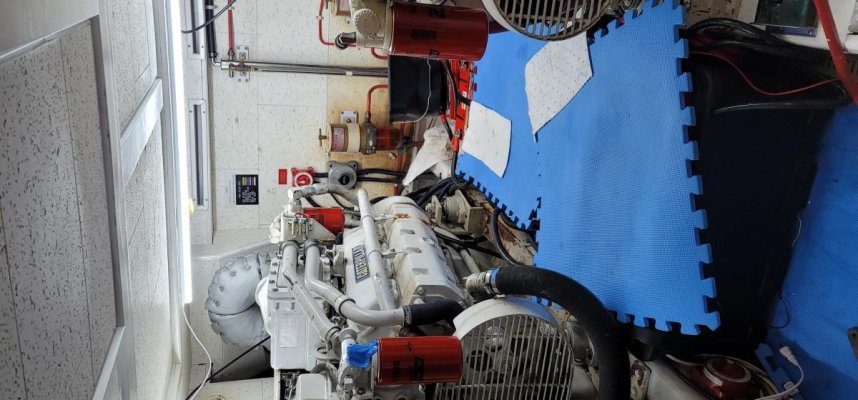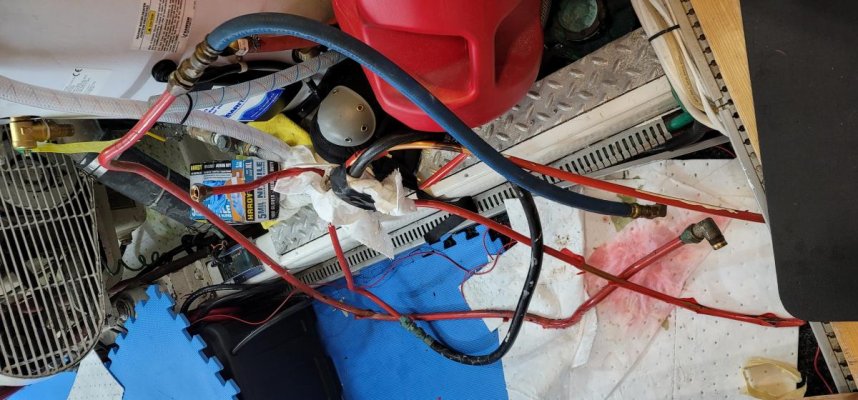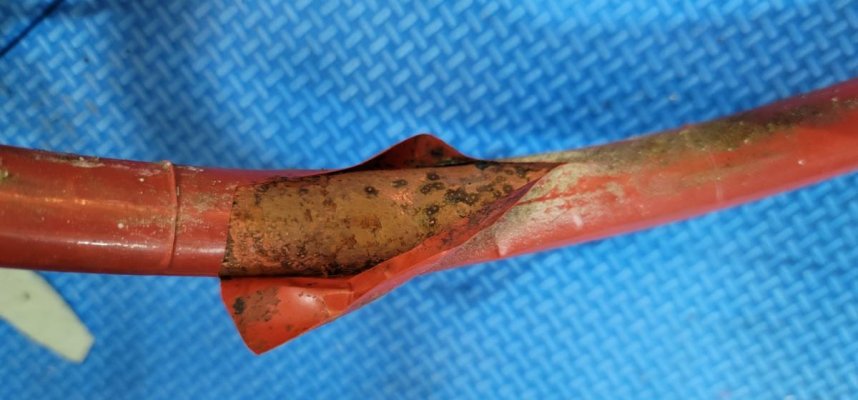Scottwb96
Senior Member
Good morning all!
I have an 89' Camargue. I am updating/adding a few things and while down in the engine room, started to really look at the sight gauge and fuel lines/valves and how they are all interconnected...
I am getting ready to add the Maretron Fuel Flow Sensors/Monitors as well as some tank sensors...
The questions I have:
1. The sight gauge manifold, should the level in that go up/down based on opening those handles? Mine does not "appear" to move one direction or the other, just seems to show "full" all the time...
2. Is that manifold (shiny silver tube) used more for equalizing the tanks?
3. Return lines, aren't they actually supposed to go to the tank, not just back into the tank main supply line?
4. Side question, I also have a 100 gallon "day tank". Where the HECK is that plumbed into/out of??? Fill cap is out in the cockpit (past the aft cabin). Also where the gen is located. But I don't see where either of those are connected either...
I have an 89' Camargue. I am updating/adding a few things and while down in the engine room, started to really look at the sight gauge and fuel lines/valves and how they are all interconnected...
I am getting ready to add the Maretron Fuel Flow Sensors/Monitors as well as some tank sensors...
The questions I have:
1. The sight gauge manifold, should the level in that go up/down based on opening those handles? Mine does not "appear" to move one direction or the other, just seems to show "full" all the time...
2. Is that manifold (shiny silver tube) used more for equalizing the tanks?
3. Return lines, aren't they actually supposed to go to the tank, not just back into the tank main supply line?
4. Side question, I also have a 100 gallon "day tank". Where the HECK is that plumbed into/out of??? Fill cap is out in the cockpit (past the aft cabin). Also where the gen is located. But I don't see where either of those are connected either...

